Our Chinese New Year celebration is about a month away so it’s time to start planning this year’s menu and what can be made ahead. My sources all agree, Chinese steamed buns can be made a month ahead so that seemed like a good place to start. Making steamed filled buns involves several steps, the first is making the char siu pork filling.
In Cantonese, char means fork in both the noun or verb form and siu (soo) means to roast or burn. “Fork roasted” refers to the way this traditional Cantonese street food is prepared, slow cooked on skewers over an open fire. Char siu should be moist and flavorful on the inside and caramelized and slightly chewy on the outside. Traditional Cantonese char siu is dyed with food coloring resulting in an unnatural ring of magenta when you cut into the meat.I forgo that step. I prefer the reddish brown color that dark soy imparts to the meat. After making char siu and pork buns for seven years now, pork shoulder is my cut of preference. On the fatty scale it is somewhere between the pork tenderloin or loin which I have found to be too lean and the currently popular pork belly, which is too fatty for my tastes. The shoulder has enough fat to prevent the meat from drying out.
I have been using the recipe for char siu from “The Chinese Kitchen” written by Eileen Yin-Fei Lo since we began celebrating Chinese New Year. I discovered this book when some of the recipes were used in a cooking class I attended in San Francisco. When I cook Chinese recipes I try to keep the ingredients as authentic as possible from the original recipe. Two of the marinade ingredients for her char siu have alluded me all these years, Mei Kuei Lu Chiew and wet or preserved red bean curd. In the front of her book Ms. Lo has a section devoted to Chinese ingredients, “The Chinese Larder”. In this section she further describes uniquely Chinese ingredients that may not be familiar in the Western kitchen. Wet bean curd are cubes of fermented bean curd with salt, wine and red rice; not to be confused with preserved bean curd. Wet bean curd is red in color, not spicy and is used in braising and barbecuing recipes. I found what I thought might be reasonable substiutes but was pretty certain not the exact ingredient she was calling for. Mei Kuei Lu Chiew is a Chinese spirit, based on sorghum and flavored with rose petals, needless to say, I gave up on that one the first year. Ms Lo admits that some of the English labeling of Chinese products may be confusing. She provides Chinese calligraphy next to each entry to show your grocer to ensure you have the right product. That would be fine but I have found increasingly that the markets I encounter are not Chinese but a mix of all Southeast Asian cultures. I have access to two supermarkets that carry Asian ingredients but both are Korean-owned. Thus the ingredients in the store may be Asian, but with a definite Korean slant with some Thai, Vietnamese, Chinese, a smattering of Japanese and Central American to boot.
Twelve years after the publication of “The Chinese Kitchen” Ms. Lo’s recipe for char siu pork and steamed buns were featured in the February/March 2011 issue of Fine Cooking magazine. I was pleased to see that in the updated version of the recipe in Fine Cooking both of my “problem ingredients” were no longer part of the marinade. Shaoxing or Chinese rice wine is now in place of Mei Kuei Chiew and the preserved bean curd is eliminated all together. Some recipes call for maltose to give char siu its classic glazed look but honey works just as well, has a thinner consistency and is easier to handle.The meat is cut into four pieces and pierced several times to allow the marinade to penetrate, preferably overnight. Most recipes call for roasting the meat and broiling it at the end to give it that desirable char. This year I roasted it in the oven for fifteen minutes and Joe finished it in the fireplace grill. The sliced pork is now ready to top a bowl of noodles, chop into a filling for fried rice, or combine with other ingredients for a dumpling filling. My next step is to combine some of the pork with a sauce to fill steamed buns.
Char Siu – Barbecued Roast Pork
Ingredients
- 1 2lb piece of pork shoulder
- 1/2 c honey
- 1/4c oyster sauce
- 1/4c hoisin sauce
- 3 1/2T dark soy sauce
- 3 1/2T light soy sauce
- 3T Shaoxing (Chinese rice wine)
- 1 1/2t five-spice powder
- Kosher salt and freshly ground white pepper
Directions
- Cut the pork shoulder lengthwise into 4 equal strips. Using a small knife, pierce each strip 4 times to help the marinade penetrate the meat. Transfer the meat to a gallon zip-lock bag.
- Combine the honey, oyster sauce, hoisin sauce, dark and light soy sauce, rice wine, five spice powder, 1/2t salt and a pinch of ground white pepper in a small bowl. Pour over the meat in the bag. Massage the pork all around in the marinade so that it is covered. Push out all the air and seal the bag. Refrigerate for at least eight hours and preferably overnight.
- Position a rack in the top third of the oven and heat oven to 425F. Line a large heavy duty baking sheet with heavy-duty foil. Put the meat on the baking sheet and spoon some of the marinade over it. Roast until an instant read thermometer inserted in the middle of the pork registers 165F, 30 to 40 minutes. During the cooking process, baste the meat occasionally with the juice from the pan and flip it several times.
- Position an oven rack about 4 inches from the broiler and heat the broiler on high. Broil the pork until it is slightly charred in places, about 2 minutes.
- *Alternate cooking method. Preheat oven to 375F. Place pork on foil lined baking sheet. Roast in oven for fifteen minutes, turning once.
- Skewer the pork and grill at about 400F, basting the pork with the remaining sauce, turning and basting until the pieces are nicely charred.
- Let the pork cool and then refrigerate until you are ready to make the bun filling. The pork may be refrigerated for up to 5 days or frozen for up to a month.
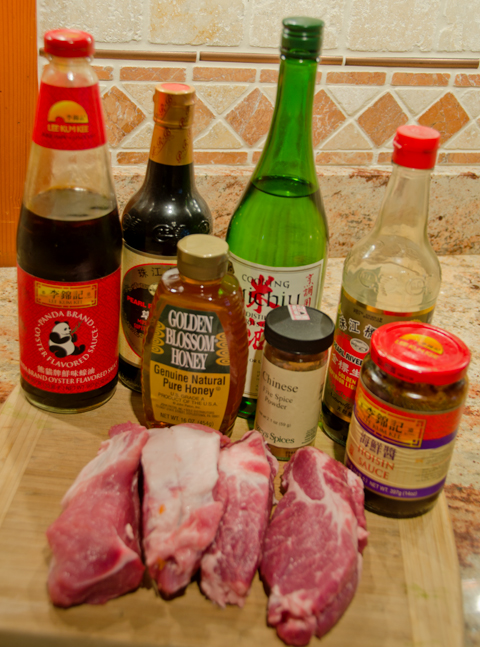
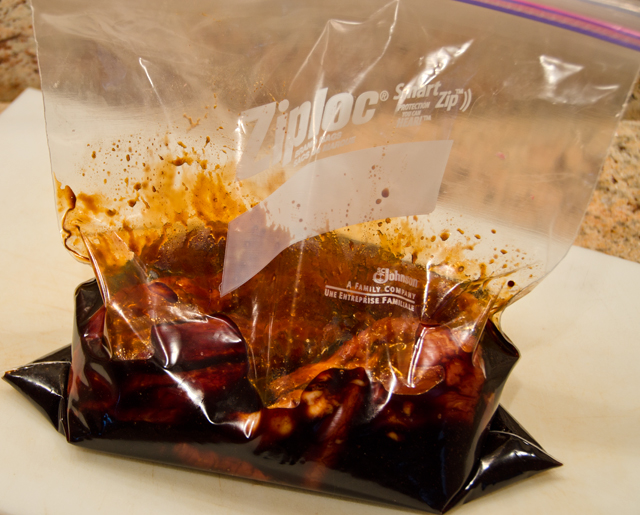
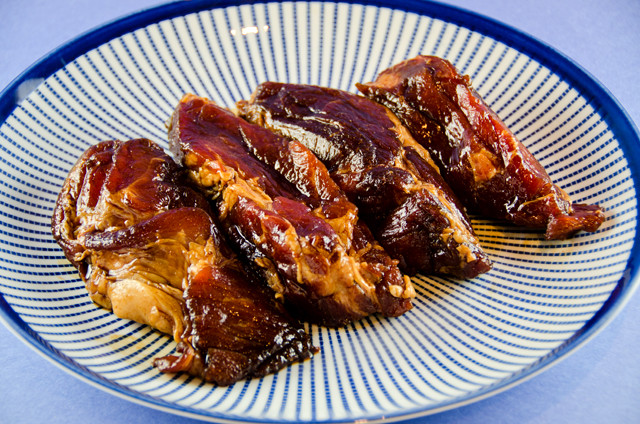
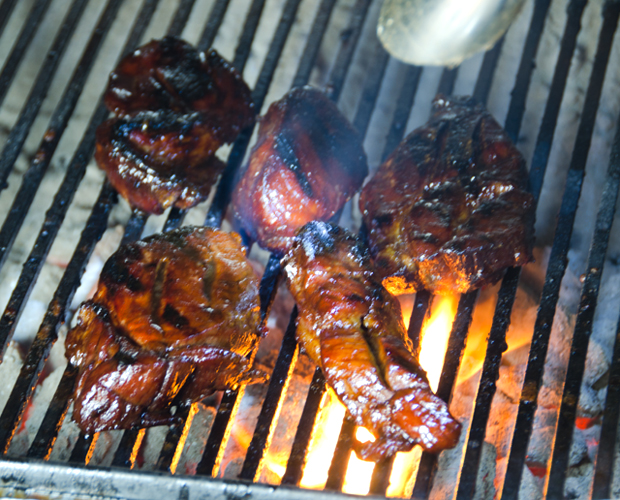
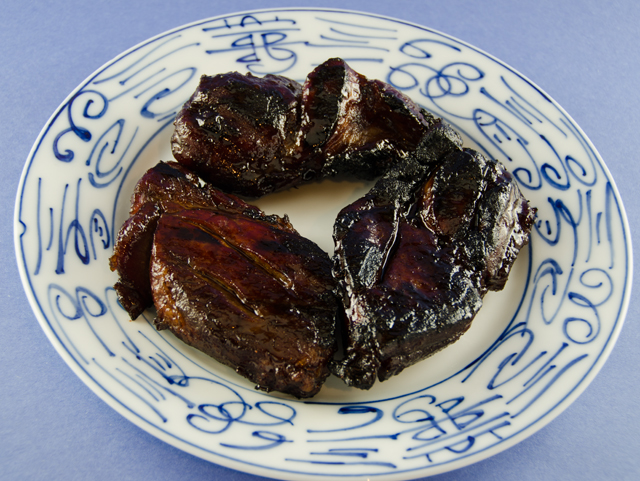
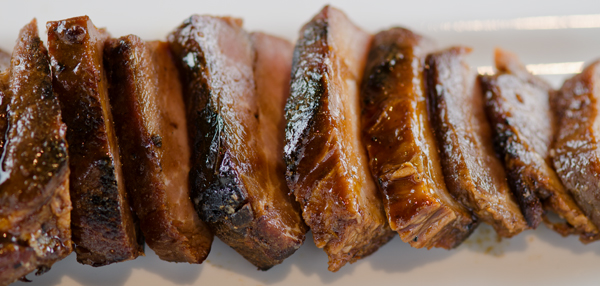
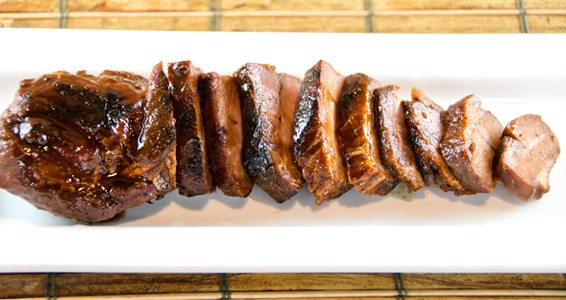
One thought on “January 21, 2013 Char Siu Pork”
Comments are closed.